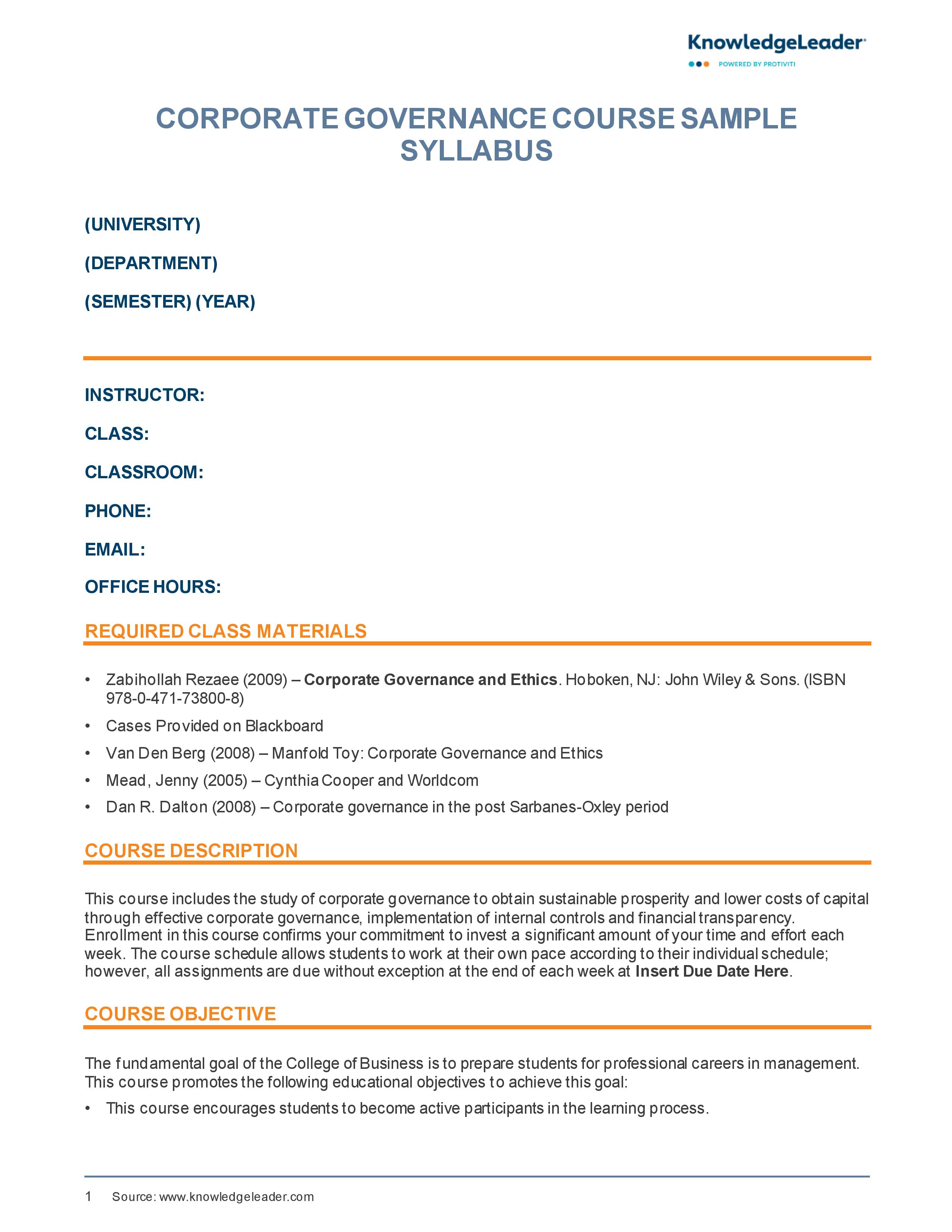Corporate Governance Sample Syllabus

Course Description
This course includes the study of corporate governance to obtain sustainable prosperity and lower costs of capital through effective corporate governance, implementation of internal controls and financial transparency. Enrollment in this course confirms your commitment to invest a significant amount of your time and effort each week. The course schedule allows students to work at their own pace according to their individual schedule; however, all assignments are due without exception at the end of each week at Insert Due Date Here.
Course Objectives
The fundamental goal of the College of Business is to prepare students for professional careers in management. This course promotes the following educational objectives to achieve this goal:
- This course encourages students to become active participants in the learning process.
- Students will learn problem-solving techniques including obtaining, organizing, analyzing, synthesizing and evaluating information.
- Students will learn to communicate the results of their analysis and problem solving through well written reports.
- Students will develop an appreciation for precise ideas and independent thinking.
- This course will stress the development of students' interpersonal skills.
- This course will build upon and integrate the students' previous knowledge of business.
Cognitive Objectives:
The overall cognitive objective of this course is to have the students acquire an understanding of corporate governance and learn how it relates to sound management. Students will be able to:
- Describe how proper corporate governance and good ethics allows the free market system to flourish.
- Portray the proper organization of a corporate board of directors and its committees as well as illustrate their proper roles and responsibilities.
- Evaluate the audit committee charter of the board of directors as well as the charter of the internal audit department of an enterprise.
- Describe the roles and responsibilities of management involving corporate governance.
- List relevant regulatory bodies involved in corporate governance as well as describe the major regulations promulgated by them.
- Describe the roles and responsibilities of internal and external auditors.
- Portray how corporate governance applies to not-for-profit organizations.
For questions regarding this syllabus, contact Robert Bromley at [email protected].